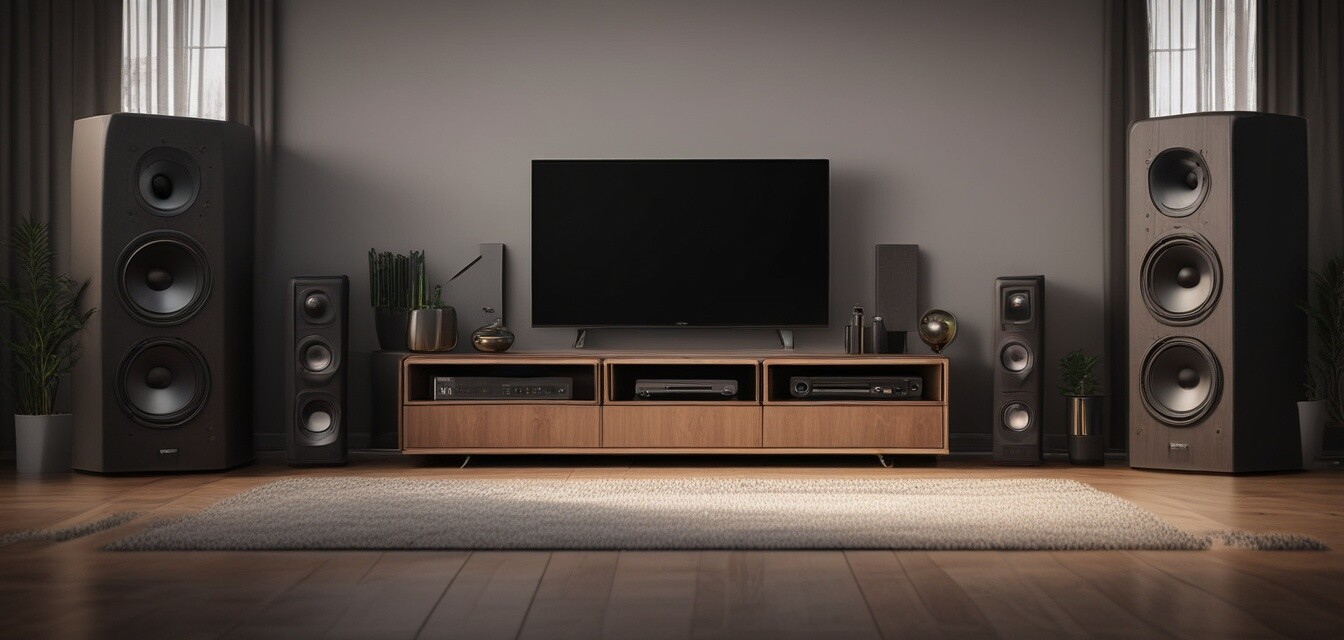
How to Create a Multi-Zone Audio System
Key Takeaways
- Understand the components of a multi-zone audio system.
- Choose the right speakers and equipment for your space.
- Learn the importance of wiring and connectivity.
- Get tips on controlling audio zones effectively.
- Explore essential products for enhancing your audio experience.
Setting up a multi-zone audio system can elevate your home entertainment experience, allowing you to stream music to multiple rooms or outdoor areas efficiently. This guide will walk you through the step-by-step process of creating a multi-zone audio system that suits your space and needs.
What is a Multi-Zone Audio System?
A multi-zone audio system lets you distribute audio to different zones or rooms in a home independently. This means you can listen to different music in each zone or play the same track throughout the house at once. Here’s how you can create one:
Components You'll Need
| Component | Description |
|---|---|
| A/V Receiver | The main component that connects to all speakers and controls the audio output. |
| Speakers | Choose from a variety of speakers such as bookshelf, outdoor, or soundbars. |
| Amplifiers | Boost audio signals, especially needed for larger systems. |
| Control System | A smart device or app that allows you to manage different zones easily. |
| Cabling | Essential for connecting all components — don’t skimp on quality! |
Step 1: Planning Your Zones
Before making any purchases, consider the layout of your home. Decide which areas you want to include in your multi-zone audio system. Common zones include:
- Living Room
- Kitchen
- Deck or Patio
- Bedroom
- Home Office
Ensure each zone has proper access to power outlets and Wi-Fi if you're using wireless speakers.
Step 2: Selecting Speakers
Choosing the right type of speakers is critical for achieving optimal sound across different zones. Here’s a breakdown of speaker types you can consider:
| Speaker Type | Best For | Pros | Cons |
|---|---|---|---|
| Bookshelf Speakers | Living rooms and offices | Compact, good sound quality | May require an amplifier |
| Outdoor Speakers | Decks and patios | Weather-resistant, durable | Sound may vary based on environment |
| In-Wall Speakers | Home theaters | Space-saving design | Requires installation and may be costly |
| Soundbars | TV rooms | Easy setup, great for dialogue | Limited bass compared to larger systems |
Step 3: Wiring and Connectivity
Proper wiring is vital for ensuring high-quality sound without interference. Here are some tips for effective wiring:
- Use high-quality speaker wires to minimize signal loss.
- Label your wires for easier troubleshooting during installation.
- Consider using Ethernet cables if your audio system connects over network streams.
For detailed wiring examples, visit our Buying Guides section.
Step 4: Setting Up the Control System
To control music in different zones, you’ll need a reliable control system. This can be an app on your smartphone or a dedicated control panel. Here’s what to consider:
- Choose a system compatible with various streaming services.
- Make sure it allows multi-zone control — some systems let you group zones together or control them separately.
For a list of popular control systems, check our Top Picks.
Step 5: Final Touches
Now that you’ve set up your multi-zone audio system, it's time to fine-tune and enjoy! Here are some final tips:
- Adjust the sound settings for each zone according to your preference.
- Test the system to ensure that all components work seamlessly together.
- Optimize speaker placement for the best acoustic performance.
Common Issues and Troubleshooting
Sometimes setups don’t go as planned. Here are a few common issues and how to address them:
- Sound Quality Issues: Check your wiring and speaker placements.
- Connectivity Problems: Ensure your Wi-Fi signal is strong or use wired connections where possible.
- Control Issues: Restart your control app or check for software updates.
Tips for Beginners
- Start simple — build your system step-by-step.
- Invest in quality components to avoid future upgrades.
- Don't be afraid to ask for help at your local audio shop.
Pros
- Flexible audio distribution
- Customization for different environments
- Enhances home entertainment experience
Cons
- Can be costly to set up
- Installation may require professional help
- Complex systems may be challenging to manage
Conclusion
Building a multi-zone audio system can enhance your home entertainment significantly. By taking the time to choose the right components and setting everything up properly, you can create an immersive audio experience that fits your lifestyle. Remember to research well and consider visiting our Home Theater Systems category for more inspiration.